Spanning 4,000 square miles, the Big Island of Hawaii is a unique locale and one of the only places in the world where you can experience 11 of the 13 climate zones. For the first-time visitor, the terrain of the Big Island of Hawaii may strike you as strange––alien almost.
Black volcanic ridges (formed not so long ago) line both sides of the highway, with vivid green strands of grass sprouting up here and there, adding further contrast to the dramatic landscape. In the distance, jagged volcanoes reach towards the sky, looming reminders of their capacity for both life and destruction.
Regardless of what you choose to see and do on this volcanic island, you are going to love exploring this exotic paradise, and this guide with its top 6 must-see things to do on the Big Island of Hawaii and resort recommendation will hopefully help you make the most of your stay on Hawaii’s Big Island.
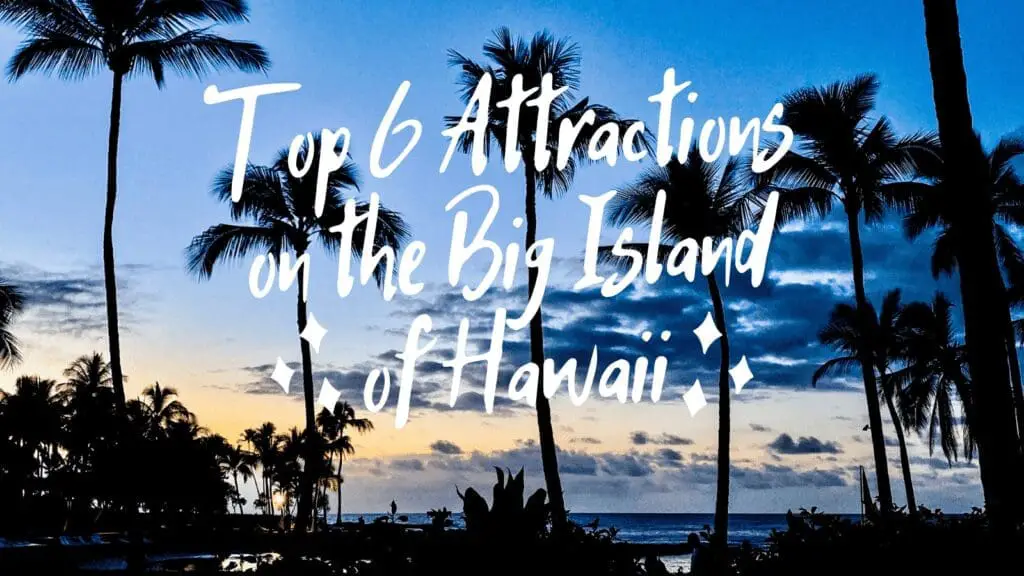
Tour a Kona Coffee Plantation

The heart of Hawaii’s “Kona Coffee Coast” is nestled in the high ridge of mountains near Kailua-Kona.
While there are quite a few high-quality coffee plantation tours to choose from, these top three deliver on their standard of tours plus delicious coffee tastings.
Greenwell Farms

Voted Hawaii’s Best Farm Tour in 2021 by Hawaii Magazine, you won’t regret a visit to this award-winning 100% Kona coffee plantation situated high atop the mountains of Kealakekua.
Covering 85 acres, Greenwell Farms is one of the oldest and largest coffee farms in the area, with its origins dating back to 1850.
Greenwell Farms offers a free 45-minute tour (no reservation required) and a more in-depth paid tour that is private. The free tour walks you through the art of coffee farming from “seed to cup,” but the paid tour takes you to areas of the farm that are normally off-limits to visitors for a truly “insider” look.
While the cost of this tour is $75 plus tax, that isn’t per person. The cost covers the group of up to 4 people. If you choose to reserve the paid private tour, do know it takes around 2 hours total, with the final 30 minutes reserved for sampling the varietals of coffee.
For more tour information, click the link below:
Heavenly Hawaiian Kona Coffee Farm
Heavenly Hawaiian Kona Coffee Farm is one of the most popular Big Island Kona tours, and with good reason. It’s a beautiful farm with lovely views, the guides are friendly, and the coffee is, well, heavenly.
The tours are free and last around an hour. While you’re given some coffee to enjoy while on your tour, you can sample more of their award-winning varietals after the tour.
Mountain Thunder Coffee Plantation
At Mountain Thunder Coffee Plantation, the primary focus is on coffee cultivation, but here you can also explore more of the native vegetation of the island and even view some lava tubes if you choose to walk the Nature Trail, which takes around 20 minutes.
Situated within a 15-minute drive of Kailua-Kona atop the Kaloko Cloud Forest, free coffee tours are offered daily, but if you’re looking for more adventure, you can reserve a private Kawasaki Mule 4×4 plantation tour where a guide drives you through the fields of coffee trees and up to the milling facility.
If your goal is to become a Kona coffee aficionado, you may need to look into the Roast Master Experience. The cost can give you sticker-shock clocking in at $325, but that price includes a group of up to 6 guests. While this tour offers a detailed coffee tour that teaches you the method and process of creating Kona coffee, you get to go one step further.
Once you taste Mountain Thunder’s various roasts, you can pick out your favorite, then roast your own green coffee with the help of their Roast Master. To wrap it up, you package your personal roast to either take with you or have them ship it to your home.
(*Note: Tours offered based on availability.)
Pu’uhonua O Honoaunau National Historic Park
Kona

This national park is a genuinely fascinating place to explore, not only because of the interesting landscape but also due to the history of its sacred place in Hawaiian history.
According to ancient Hawaiian law or “kapu,” if you broke the law, such as entering an area reserved for only the chiefs or just eating forbidden food, the penalty was––you guessed it––death. Your one path to survival was running or swimming away and trying to reach the nearest pu’uhonua (“place of refuge”) before they captured you.

If you were able to reach this sacred place, then you would be saved. It sounds sort of like playing a game of Tag where reaching “Home Base” keeps you safe, except with more deadly consequences than just being proclaimed “You’re It” if you don’t make it.
The Pu’uhonua o Hōnaunau is now a National Historical Park that you can visit, but it is still believed to be a sacred place imbued with the spirit of peace, natural harmony, and the air of forgiveness.
Situated directly along the Kona coastline, the Pu’u is easy to find, with clear state park signs guiding you to the large parking lot.
Entrance Fees
Puʻuhonua o Hōnaunau (non-commercial vehicle) – $20.00
Puʻuhonua o Hōnaunau (motorcycle) – $15.00
Puʻuhonua o Hōnaunau (individual on foot, bicycle, etc.) – $10.00
Once you park and walk along the main path, a wall rises before you marking the boundaries between the royal grounds and the sanctuary. The striking ki’i (carved wooden images) surround the Hale o Keawe temple, where inside lie the bones of the chiefs believed to infuse the area with their power or “mana.”
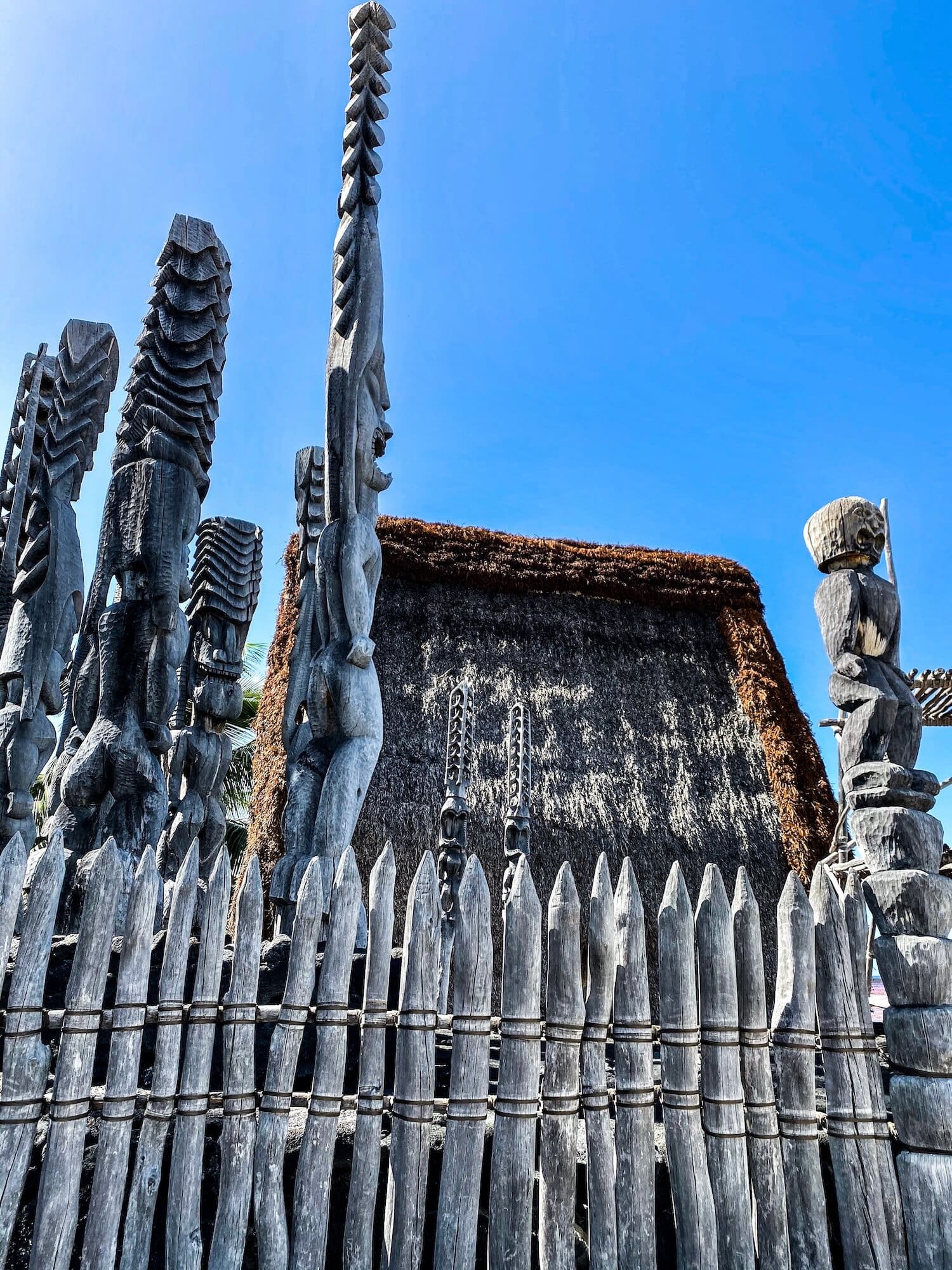
Although you can’t enter the temple hut, the exterior is fascinating with its intricately carved gods and hand-sharpened spiked fence. A few carved, warrior-like characters face the bay, hands clenched by their sides, seemingly still protecting this sacred Hawaiian site.
Moving on past the place of refuge are tidal pools that you can explore by carefully walking out onto the uneven rocks.

You can hear the sea waves breaking beyond, but here the pools are protected and still–– through the crystal clear waters, you can see small sea creatures going about their day, spiny urchins keeping calm, and tiny yellow fish darting here and there looking like tiny rays of the sun.

Coastal Drives & Scenic Overlooks
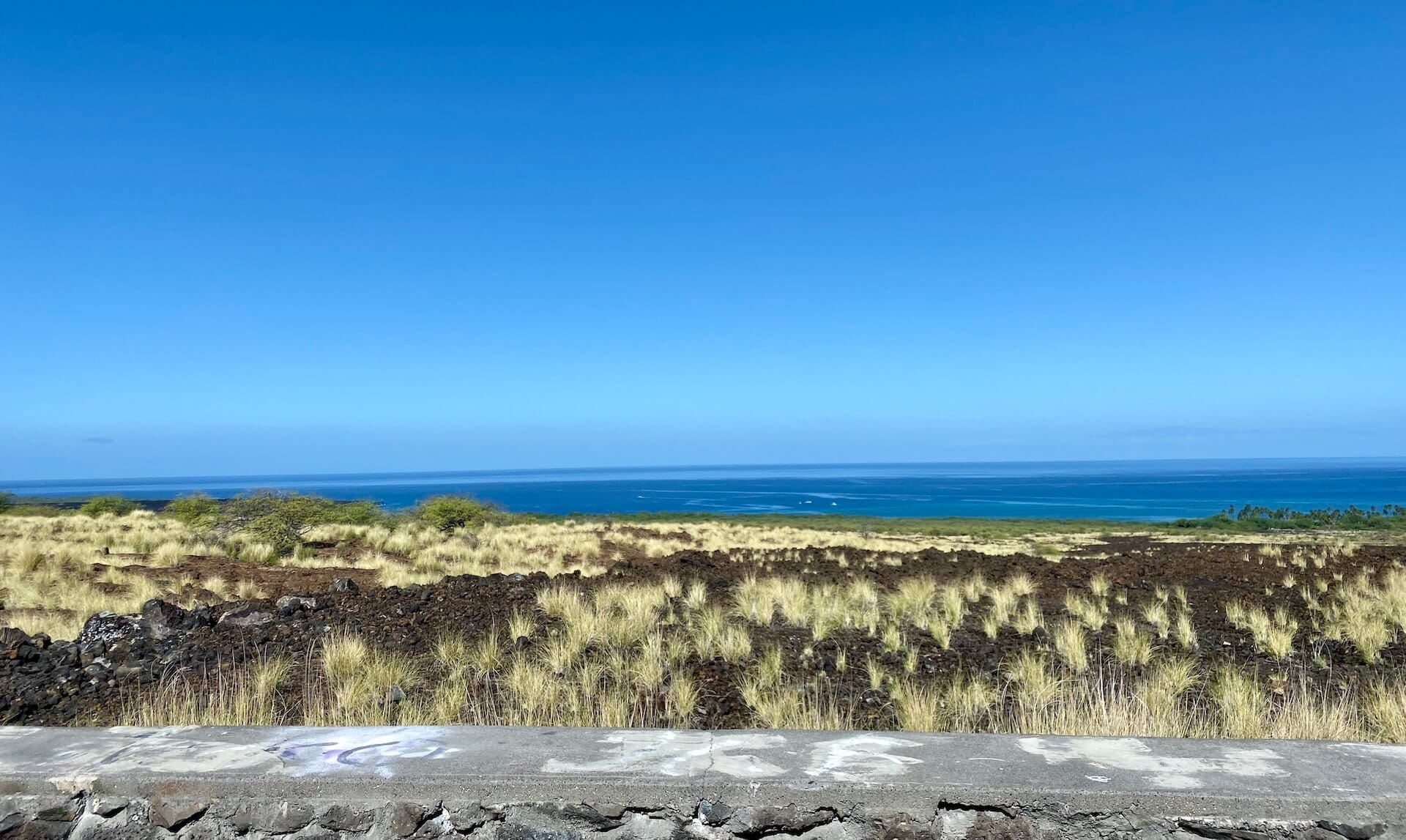
There are a lot of amazing things to do on the Big Island of Hawaii, but one of my absolute favorite days was literally just driving around and seeing it.

No matter what part of the island you choose to drive, you should download the Shaka Guide––a low-cost app that functions like a tour guide who rides around with you telling you all the best places to go and what to know without taking up any space.
The app syncs with your GPS so it knows which direction you’re heading and points out the areas of interest or just random scenic overlooks to stop and take pics. You’ll not only learn the history of the land passing by your window, but it will help to guide you to some of the most beautiful places the Big Island has to offer.
Two drives that I recommend are:
- The Kona Coastal Drive
- Saddle Road / Daniel K. Inouye Hwy
Driving the Golden Kona Coast

When you drive the golden Kona coast located on the west side of the island, you can learn about all of Captain Cook’s misadventures and the rise of Kona coffee production and macadamia nut plantations, plus you’ll see some truly stunning scenery.
Dining Suggestion: If you want to grab a quick bite with a view before you head out on your drive, stop in at Sam Choy’s Kai Lanai in Keauhou and enjoy some fresh seafood while you take in the breezy panoramic views of the blue Pacific glittering below in this large, open-air restaurant.
Kona Coastal Drive
Start your drive in Kailua-Kona and follow the Mamalahoa Bypass Highway towards Captain Cook and Honaunau at Kealakekua Bay. Here you can park your vehicle for free and walk to the edge of the squared-off bay.
The area is well-known for its excellent snorkeling, and from the clarity of the water, it’s not hard to see why it draws so many.
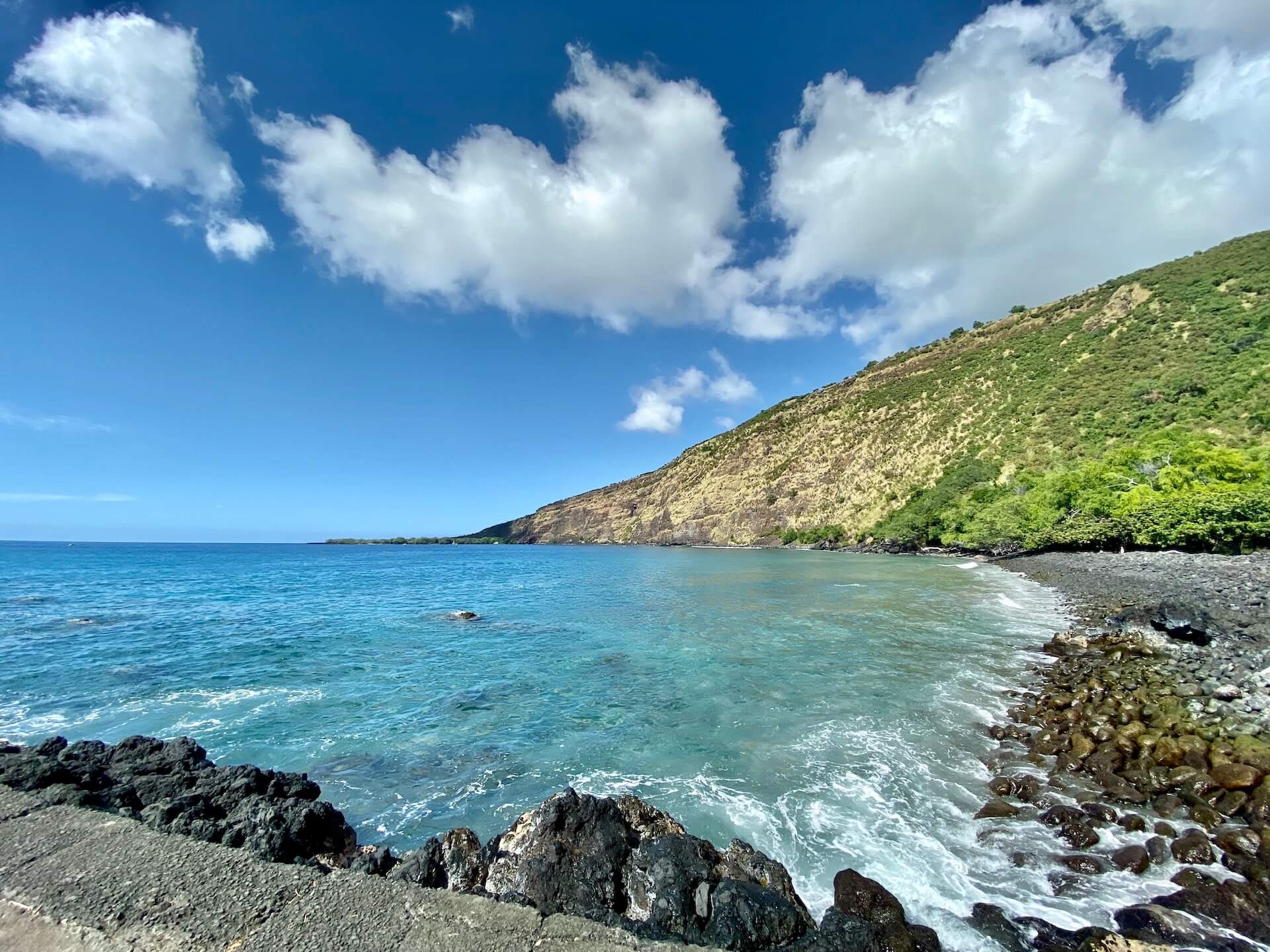
From here, continue along the Pu’uhonua Road (Hwy 160) towards the Pu’uhonua o Honaunau National Historical Park, where you can stop off and stretch your legs as you view the sacred site and lagoon views.
Or, if you don’t have the 45 minutes to an hour to spare, continue on your journey. The highway climbs higher into the mountains at this point, where the road name changes to the Keala o Keawe Rd.
Snack Tip: Check out the South Kona Fruit Stand on this stretch of highway just across the street from the entrance to Mongoose Mountain Coffee Farm. This friendly fruit stand serves 100% local Kona coffee, fresh massive fruit, a variety of snacks, along with deliciously fresh Pineapple Smoothies.

The high mountain road leads you into the heart of the coffee coast with the strong waves of the Pacific rolling beyond and below. It’s worth pulling over for the views at the overlook near Kaloko-Honokohau National Historical Park. A little further on is Honu’apo Bay which is a mesmerizing place to stop and stare.

If I didn’t know any better, I would have thought I was in Ireland. The green-topped cliffs jut ruggedly into the ocean where waves continuously crash into the rocks, spraying upward and turning the swirling waters a foamy turquoise.
From this point in the drive, if you still have time in the day, you can make your way on to the Hawaii Volcanic National Park.
Saddle Road / Daniel K. Inouye Hwy Mountain Drive

If possible, try to time this drive around sunset when the slanting rays of the sun light up the mountain in a fiery red. Ideally, you would start your journey from Hilo and drive along Route 200, then onto the Daniel K Inouye Hwy, which skirts the Mauna Kea Reserve.

On the Hilo side, low-hanging clouds and fog obscure the views, and the weather here can tend to be gray, cold, and rainy. Through the mist, you can just make out the deep red top of the volcano in the distance.
But, amazingly, once the road levels out and you begin your descent to the other side towards Waikoloa Village, the fog clears, the rain stops, and you’re back in the warm rays of the sun.

Hawaii Volcanic National Park

Hawaii’s Volcano National Park is massive, and there is so much to see here. Driving through the park, you can pause along the way to explore some of its one-of-a-kind features, like the lava trees and tree molds.

“This park protects some of the most unique geological, biological, and cultural landscapes in the world. Extending from sea level to the summit of Mauna Loa at 13,677 feet, the park encompasses the summits of two of the world’s most active volcanoes – Kilauea and Mauna Loa” –NPS.Gov
While I normally prefer to write up the details and helpful hints for visiting a place, in this case, the best option is to visit the Hawaii Volcano National Park official website to receive the most up-to-date information about what areas of the park are opened or closed or if there is any dangerous volcanic activity happening during the time of your visit.
Fun Detour: If after touring the Volcano National Park you’re in the mood for a sweet and salty snack, take the quick detour to Mauna-Loa Macadamia Nut Factory in Hilo. Inside the large gift shop you can sample a wide variety of their sweet and savory macadamia nut flavors.

Black Sand Beach of Punalu’u

This beach is truly one of the most amazing places on all of the Big Island. The Punalu’u Black Sand Beach Park is easy to find and access with a free parking lot.

From here, you can walk out onto the midnight-colored rocks. The waves rolling here are large and deep green, curling, crashing, and re-curling before they even touched the shore. Surfers embrace the waves here, maneuvering each wave as they roll to the shore.

It’s a good idea to come prepared with water shoes. Deep crevices are everywhere, so it’s easy to turn an ankle if you’re not careful.

While there’s no guarantee, there’s still a good chance that large sea turtles will be splayed out and sunning themselves near the water, looking completely oblivious to us onlookers.


This next note shouldn’t come as a shock, but the black sand is a nightmare to remove. So, don’t wear white or any other clothes or swimsuits you care about because unless you’re really careful, well, you’re going to look like you’ve been playing around on a black sand beach.

The Green Sand Beach (Papakolea): The Big Island of Hawaii is home to one of the rarest beaches in the world where the sand is made up of green crystals called olivine.
It’s one of only four green sand beaches in the world. Visiting this almost one of a kind locale is not easy though. Once you park your vehicle, you have to hike 2.5 miles and then carefully climb down the lava cliff on the west side of the bay. If you are interested in making the trek to this beach, check out this detailed guide:

LoveBigIsland Green Sand Beach Guide
Stargazing on Mauna Kea

There are very few group sightseeing adventures I book in advance, but the Mauna Kea Summit and Stars Small-Group Adventure Tour, which features a late night of stargazing on top of Mauna Kea, is worth it. It was one of my absolute favorite things to do on the Big Island of Hawaii.
The cost is a bit steep, starting at $246 a person, but there is a 48-hour cancellation policy.

Experience big skies, epic sunsets, and incredible nighttime views on this Mauna Kea stargazing trip with a small group.
Join no more than 28 guests for a pre-trip picnic at a historic Hawaiian ranch, proceeded by a ride in a 4×4 luxury van to the summit of the Big Island’s tallest peak. After admiring a sunset view, continue down to 9,000 feet (2,743 meters) for a stargazing session, complete with a telescope, hot chocolate, and dessert.
The trip also includes a guide and a hooded parka to keep you warm. Enjoy a private stargazing show through 11” Celestron telescopes on Mauna Kea Learn about the history, culture, and ecology of Hawaii Indulge in a picnic dinner at a historical ranch Small-group tour limited to 14 participants, ensuring a personalized experience with a naturalist guide.
The Stargazing on Mauna Kea Summit & Stars Adventure begins at 1:25 pm at Queen’s Marketplace where they pick you up at the curb in front of Charlie’s Thai Cuisine.
The journey up the slopes of Mauna Kea begins in the warm climes at sea level, but you can feel the temps dropping with every mile you climb higher. You may even see a Pueo, a local owl, perched alongside the road.
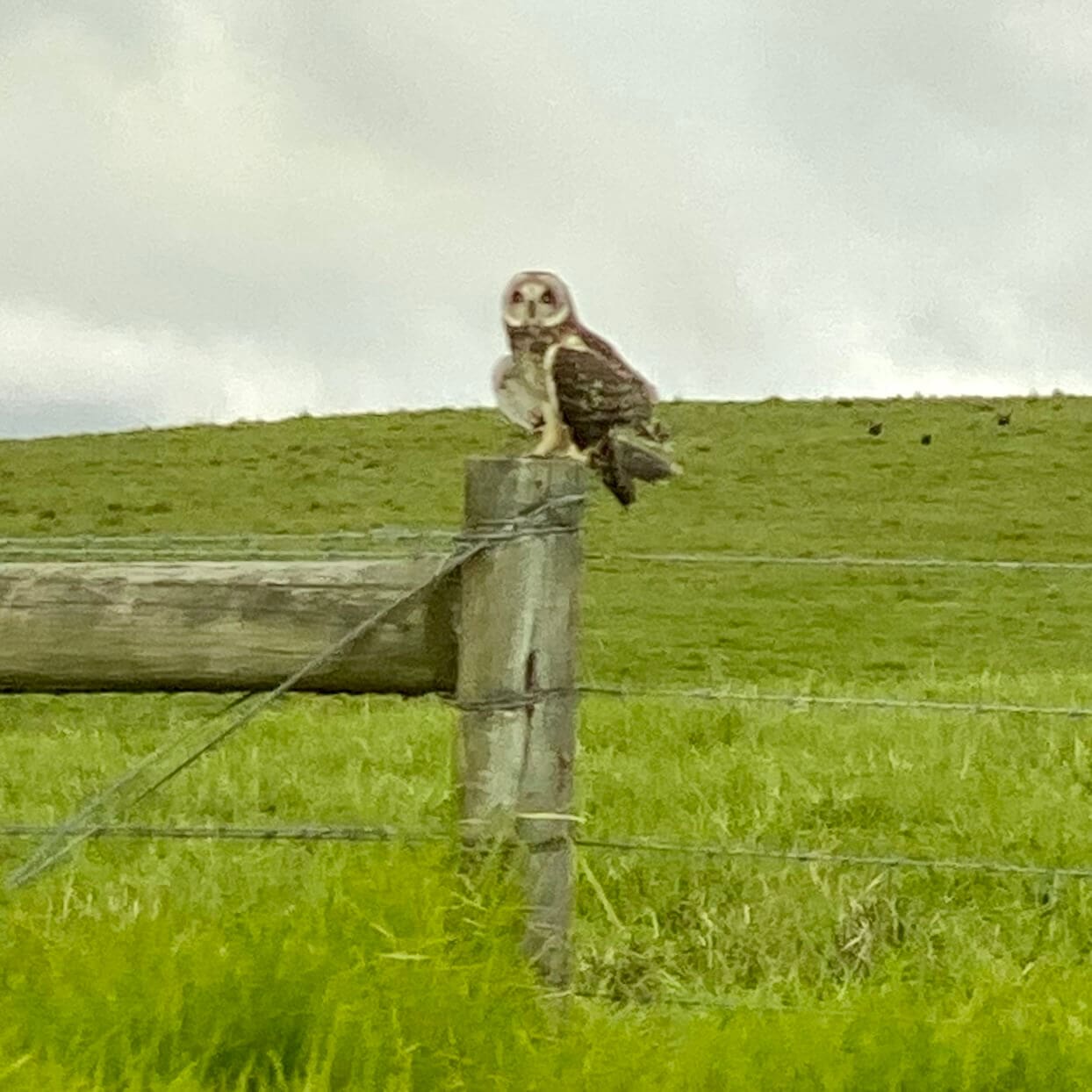
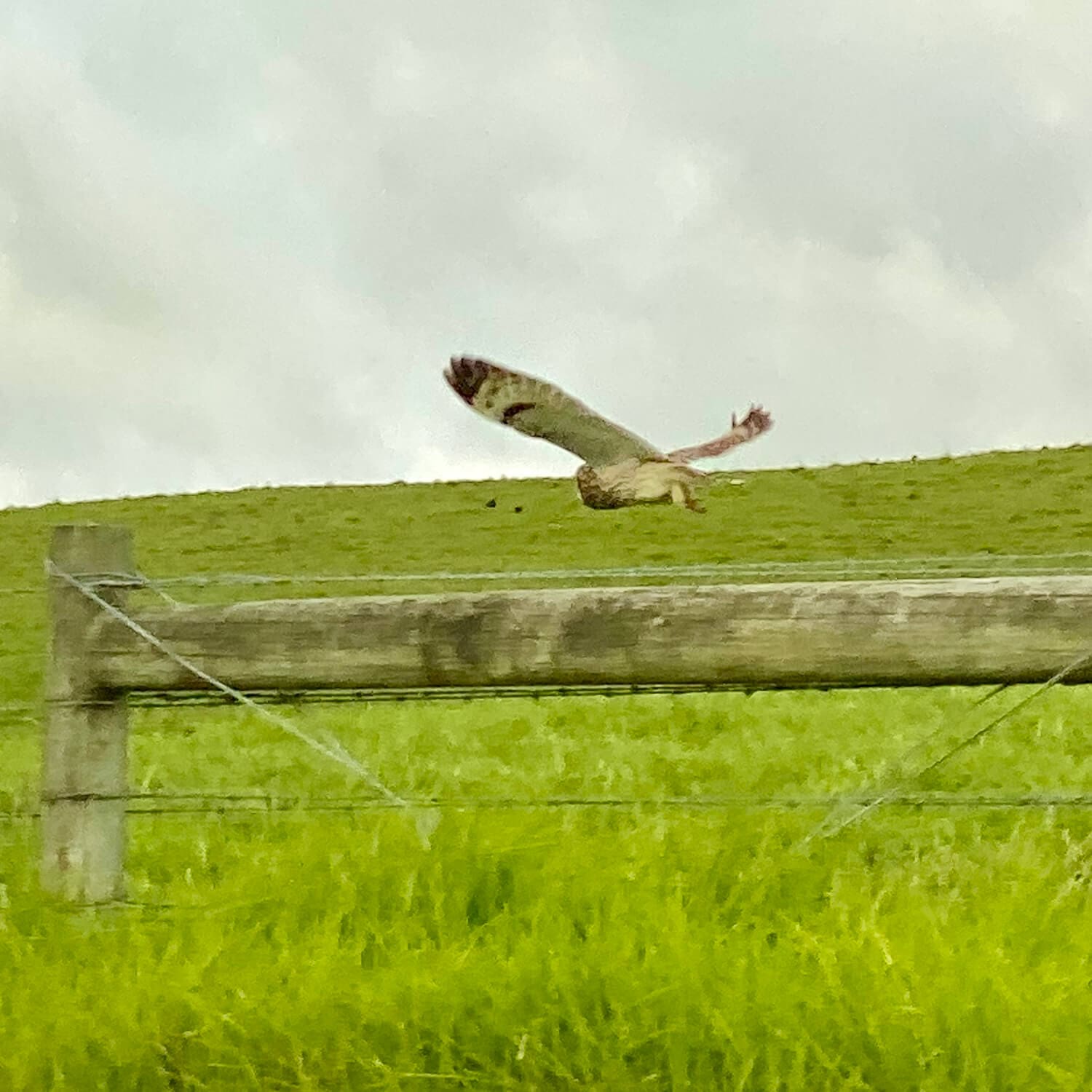
While a low fog may be gathering below you, up above, you can glimpse the flattened crater of the summit of Mauna Kea. My only two drawbacks of this stargazing adventure would be the food provided and the necessary use of portapotties.
But, 5-star food isn’t why you’re there, and portapotties are the only option they have to offer when you’re on the side of a mountain. After you stop to eat, you begin the bumpy ride up the deeply rutted road to the hiking trail point.

In the bright cool air, as you stroll through the nature preserve, keep an eye out for the yellow Palila birds. It can seem a little strange at first, but when you look towards the edge of the mountain, you’re so high up, that you’re literally walking above the clouds.

Watching the sun slowly set on top of the clouds, then through and beneath them, beginning its slow work of changing the colors of the sky, is an otherworldly experience. You’ll be torn between taking pictures to try and capture it or just standing there and soaking up the experience.
To live in the moment or capture a moment to live again later? That is the question.

Even without the stargazing (which hadn’t even happened yet), watching the sunset at 7,000 feet was already worth the price. To add to the mysticism of the moment were the voices of local Hawaiians who gather each sunset to perform an ancient end-of-day chant.

With the vanishing sun, the air grows cold quickly, but thankfully, they provide parkas, which help ward off the chill. As the night grows darker, you jostle down the rutted lane back to the astronomy field.
The guides provide the most delicious hot chocolate, helping to warm you from the inside out as you wait for the set-up of the telescope.

Lying on the ground, looking up, you can see the Milky Way in all its glory, rewarding you with millions of stars glittering above, forming the iconic milky strain stretching from the furthest reaches of the sky to the other.
On the high slopes of Mauna Kea, the clouds and fog all burn away to reveal a mass of inky darkness glittering above you.

Shooting stars surprise you in between taking turns looking through the telescope while the guide aimed it at various points of interest in the sky. While I gazed at this brilliant night sky, my feet went numb from the cold, but I didn’t mind (for a while anyway).
It will be late by the time you begin your descent back to sea level. You might be able to hold on for a late dinner, but your best-case scenario may be to just go back to your hotel and order room service.
3 Bonus Things To Do on the Big Island of Hawaii
Play a Round of Golf

If you have the time, playing a round of golf is an ideal way to spend a morning or afternoon while still enjoying some of the Big Island’s most dramatic scenery. Hawaii has 10 courses to choose from, but the Mauna Lani Resort South Course is one of the most impressively beautiful.
Its hole #15 is one of the most photographed over-the-water golf course holes in the world. If you’re golfing there during the winter months, you just might luck out and see humpback whales migrating the waters.
Surf the Waves Near Kona

Surfing conditions are constantly changing, meaning where you might want to go surfing is highly dependant on what time of year you visit; however, there are three prime spots in the Kona region of the Big Island that typically offer prime surfing conditions.
- Kahalu’u (also great for snorkeling) | This bay is a go-to spot for first-time surfers. You can also rent a surfboard and get lessons.
- Pine Trees | It can get a little crowded here due to the popularity of this surf site near an exposed reef break, but the surfing is fairly consistent year-round.
- Banyans | Located near the downtown area of Kona, this surf spot is best for more experienced surfers.
Explore the Island by Helicopter

While I didn’t feel the need to take a helicopter tour, they are an excellent way to see parts of the island that are difficult to access by hike or by car. All of the Hawaiian Islands offer helicopter tours as a sightseeing option, and this link below will take you to the booking site for the top ten options.
Where to Stay on the Big Island

The Fairmont Orchid

There are so many beautiful and top-quality hotel and resorts to stay at during your visit to the Big Island of Hawaii, but I don’t regret one penny or second spent here.
With its prime location on Hawaii’s Kohala Coast, the weather at the Fairmont Orchid is mild and clear with limited rain giving you plenty of prime time to explore the lagoons, enjoy the waves, or just relax by the 10,000 square foot oceanfront pool.
I recommend trying to reserve a lagoon-facing room on the first floor where you can walk out on your private lanai with direct access to the open, plush green where morning yoga takes place with the placid lagoon and beach just on the other side of the paved walkway.
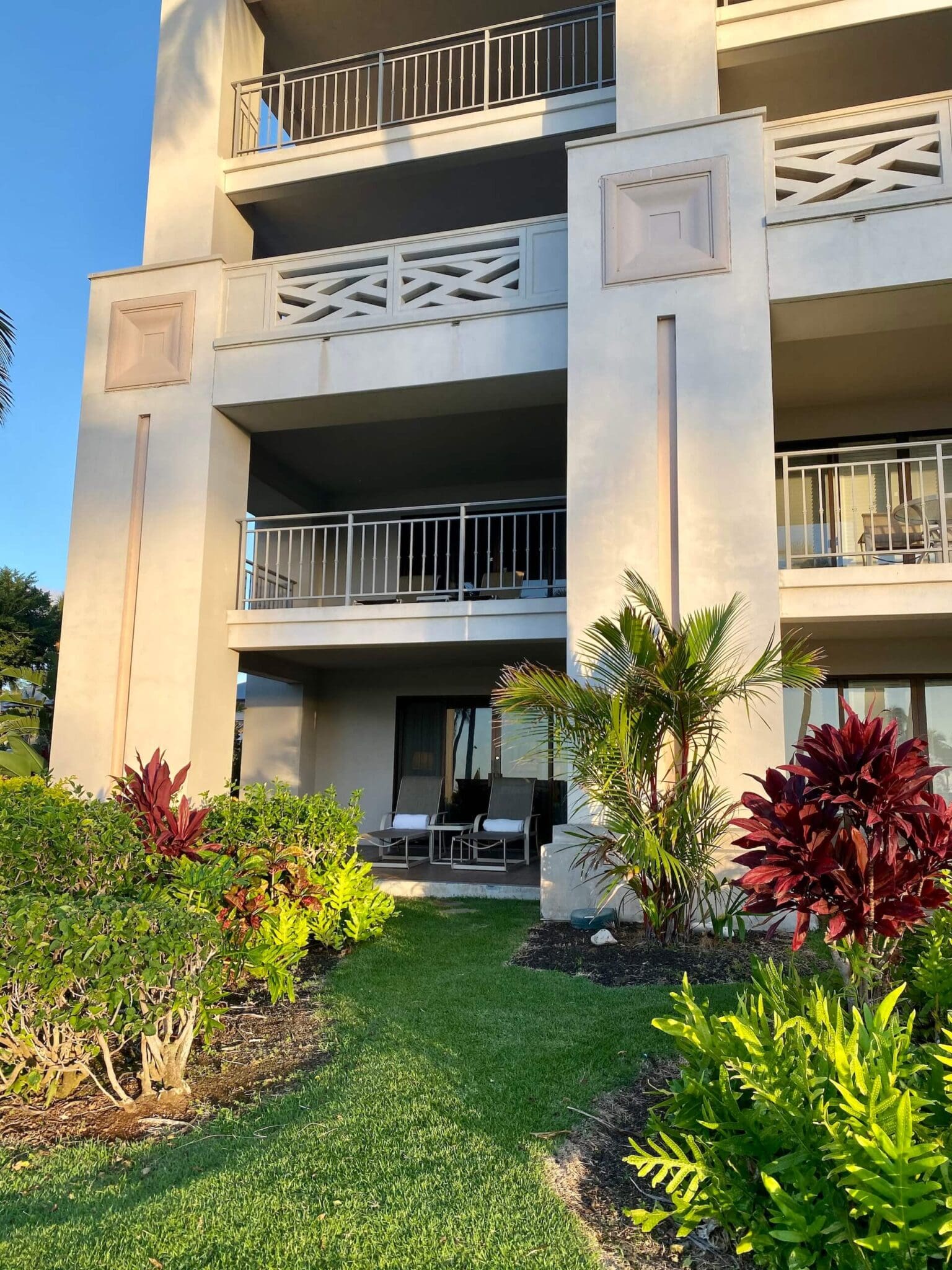
Dining at the Resort
The resort is well designed though so that no matter where you stay, you’re still in easy proximity to the expansive pool area with its convenient cafe, Hale Kai, where you can sit under the eave of the tiki roofs and umbrellas and savor crisp nachos or savory ahi tuna poke while sipping a Hale Sangria or Mango Tiki Cooler.
The Luana Lounge is the perfect place to unwind to the sounds of live, local music all while enjoying a small plate and a craft cocktail while you relive the adventures of the day.
If you’re looking for a memorable fine dining experience, then you may want to reserve a table at the AAA, four-diamond signature restaurant, Brown’s Beach House. With tables set out on the lawn overlooking Pauoa Bay, it’s an ideal setting to watch the sunset and dine under the stars.
Pueo’s Osteria: Nearby Dining Suggestion
Dining at this locally-sourced, Italian-inspired romantic restaurant is a treat. Here you can indulge in fresh bread, savor their house-made pastas, and linger over wine, espresso, and after-dinner digestifs.
The Pueo is a local, indigenous owl which represents the Chef’s focus on dinner and serving food until midnight. Pueo’s Osteria caters to locals, visitors and serves late to welcome service industry personnel. Engaging service, approachable pricing, great flavors and a lively atmosphere await at Pueo’s Osteria – food, wine & fun … where the night owls meet.
The Spa Without Walls at The Fairmont Orchid

Fairmont Orchid’s award-winning Spa features treatments that integrate the natural therapeutic environment, ancient Hawaiian healing arts and locally sourced products into every experience.
Choose from eight private outdoor waterfall hales (huts), six oceanfront cabanas or three indoor treatment rooms to begin your spa journey.

If you want to enjoy a spa treatment, definitely reserve your treatment months to at least weeks in advance.
Holoholokai Nature Path & Beach Park
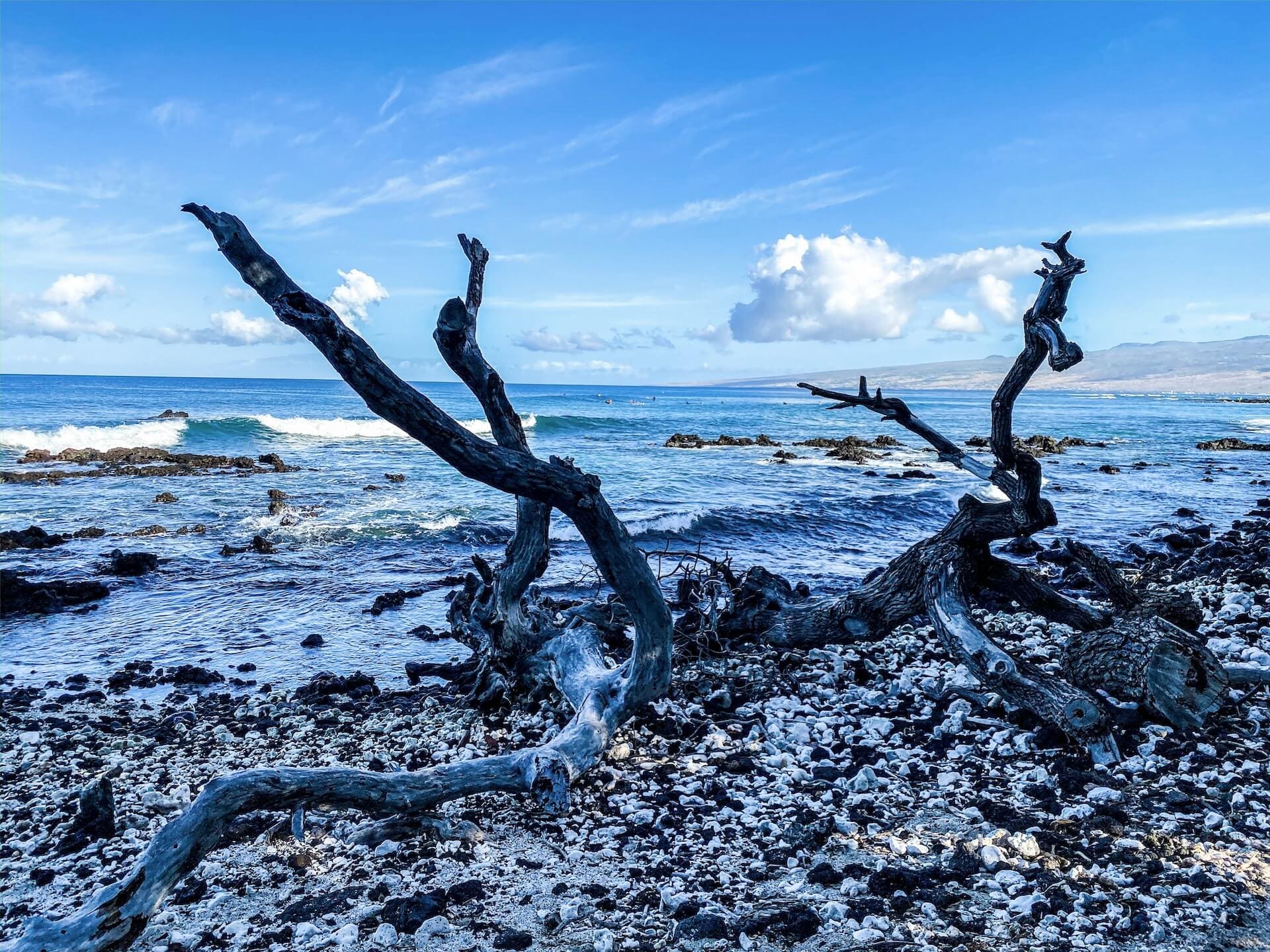
As busy as your mornings may be, try to carve out some time to walk the rocky oceanside beach trail from the Fairmont Orchid to the Holoholokai Beach Park.
At the park, surfers wait for the next big one to roll in, each one following some unsaid surfer code, sharing the “aloha” as they say here.

Final Thoughts

The world is full of stunning places, but the Big Island of Hawaii is a truly special place.

It was hard to pack up and say goodbye, but getting the chance to visit this mystical island was both a privilege and pleasure that I won’t forget and you probably won’t forget either.



Really interesting post!